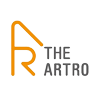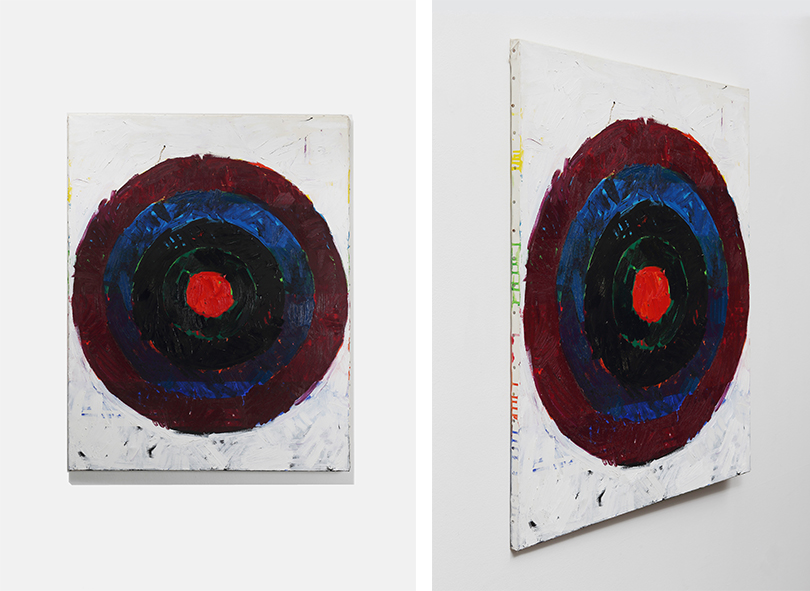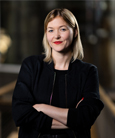Features / Focus
The Art Market in the Post-Pandemic World – An Interview with Clara Runge
posted 05 Aug 2022
The Covid-19 crisis has heralded huge changes across every aspect of society. The pandemic amplified opportunities and changes, especially in the digital realm, and people are now paying close attention to digital transformations. The art scene particularly saw unprecedented new phenomena, such as the adoption of virtual reality (VR) exhibitions and online auctions, the activation of online viewing rooms, and the expansion of online art market platforms. Embracing its reopening in the year 2022, TheArtro presents special feature to look back and reflect upon the changes that the art world has undergone over the past two years, as well as to project future prospects and outlook. To this end, interviews were conducted with seven visual art experts working in various art fields worldwide. Clara Runge (ZKM), Eunice Lee (Whitney Museum of American Art), Johann König (König Galerie), Victoria Siddall (Frieze), Tim Schneider (Artnet News), Jennifer Pratt (Artsy), Simon Fisher (OCULA) each participated in this project and discussed the transformation of the art industry since Covid-19.

Clara Runge, Curator at ZKM (Zentrum für Kunst und Medien)
Q. Do you think that Covid-19 has changed the way the art exhibition/market operates? If so, in what ways? (e.g., collaboration with international museums, foundations, etc.)
Covid-19 had huge impacts on all areas of life. The temporary closure of museums, exhibition spaces and galleries brought new challenges to the cultural sector, demanding rapidly new ideas and ways of acting. Planned exhibitions were either postponed or moved online. Of course, online exhibitions and online events existed before, but lock-down created a new urgency, which fueled the emergence of new and innovative online concepts. The same applies to art fairs and auctions. This indeed affected the way the art market operates. The focus of moving more and more to the digital space opened up new possibilities, new target groups and maybe also even new contents.
Q. What are the consequences (pros & cons) of the growth of the online art market/channel? Should we expand or downsize the online market? Can you suggest any specific improvement measures?
The growth of the online art market is strongly connected to the hype around NFTs, so-called ‘non-fungible tokens’, which are data units stored in the blockchain that both certify the uniqueness of a digital object and authenticate ownership. With this, digital art now can be collected like a traditional sculpture or painting. For artists already working in the digital space, this finally opened up the possibility to find new ways to make a living: to be paid for the work they are doing. This is one of the great effects. But in the auctions in renowned auction houses, which achieved exorbitant prices, the hype started and with that hype the space for speculative transactions grew. Now NFTs, which cannot be equated in general with digital art, are often described as the objects of an unleashed speculative market. This carries a great risk, because at some point the bubble might burst. At the same time, great attention is drawn to market and financially related topics. For me personally, it is not so interesting to only focus on NFTs, but rather more on digital art that often circulates below the radar of market structures. Artists that challenge the medium they are working with. Artists that reflect critically upon their own practice and the system/situation they are living and working in. I think it is worthy and necessary to focus on these positions to learn more about the potentials of the digital space. So, in a way, it might be interesting to move beyond the online market.
Q. What are the influences of digital art (NFT, metaverse, etc.) in various aspects? Is digital art as valuable as traditional art?
The arrival of the computer opened up new possibilities for artists in their artistic practice, and changed our notion of creativity and authorship. Alan Turing, the English mathematician, already predicted in 1948 that machines will permeate our thinking and will eventually even write poetry. Around 1960, analogue and digital computers were used for the first time for the production of artworks. The influence of the computer, as well as the development of digital art, is therefore crucial for the way artists find new ways of expression. Starting with the early computer graphics in the 1960s, artists later on developed computer-based artworks, which experimented, amongst others, with new interfaces, for example motion tracking, or machine learning software. The field of digital art as well as the possibilities it brings are huge. One of the latest artistic explorations oscillates around NFTs, which made digital art valuable for the art market. However, here there are also many different nuances: e.g., on-chain NFTs1), where the blockchain not only contains information about the artists and the ownership, but also the entire code from which the work is generated. With only a few lines of codes, artists are able to create complex images. This is definitely a sign of technical mastery. Therefore, in my view, digital art is as valuable as traditional art – of course the value, in fact for all art in general, is always dependent on the specific work, its realization, its technique and its conceptual ideas. When thinking about the potentials of digital art, and blockchain-technology in particular, I would say that the biggest influences lie in the ideals of democratization, decentralization, federation and collective collaboration. But of course, these ideals are not always easy to implement in reality.
Q. Post Covid-19, what is your outlook for the art market? What should each art industry (art fair, gallery, foundation, artist, etc.) do to prepare for this rapidly changing art market?
The pandemic has taught us to stay flexible and to react quickly to new situations. The digital space offers appropriate structures for further experimentation. Therefore, digital art will remain important, but maybe (and hopefully) the hype will decrease, in order to focus not on the financial speculations, but rather on the art and its potentials.
We are living in challenging times with existential crises surrounding us. Innovative artistic ideas, as well as international dialogue and exchange, are crucially important in order to find solutions to the problems that are affecting all of us. By expanding into the digital during the lock-down, we have learned that it is possible to connect no matter what – beyond borders, beyond nationalities, even beyond physical meetings. This creates the potential of a community that we should also further explore after Covid-19.

Soun-Gui Kim, Target-Painting, 1985, Oil on canvas, 92 x 72.5 cm.
Courtesy of Arario Gallery
Q. What is attractive about Korean contemporary art? What’s special about it?
Korea is a country with an impressive, beautiful, and traditional culture. At the same time, it is very future-oriented and focused on new technologies. These two impacts create very interesting dialogues, which are quite often reflected in the Korean contemporary art scene. It is absolutely fascinating and inspiring how artists combine their artistic practice with cutting-edge technologies and scientific methods.
Q. Is there any Korean artist you are paying attention to?
At ZKM I am currently involved in the preparation of an extensive retrospective of Korean-French artist Soun-Gui Kim. The exhibition is a collaboration with the National Museum of Modern and Contemporary Art (MMCA) in Seoul, where it was curated by Soojung Yi and presented in 2019. I am so happy about this project because Kim’s work – so light and so deep at the same time, combining such a great variety of media – is absolutely impressive. It is such a great opportunity to work with her so intensively. And of course, there are many other Korean contemporary artists, for example Anicka Yi, whom I should mention here. But since the exhibition Soun-Gui Kim: Lazy Clouds will open in September and I am very much looking forward to it.
1)On-chain NFTs refer to NFTs that all information (media files, metadata, transaction history, etc.) is written and stored on the blockchain. Most NFTs may store their data off-chain due to the data-processing speed, network congestion, and maintenance cost. These are called off-chain NFTs.
Related Articles
The Art Market in the Post-Pandemic World – An Interview with Eunice Lee
The Art Market in the Post-Pandemic World – An Interview with Johann König
The Art Market in the Post-Pandemic World – An Interview with Victoria Siddall
The Art Market in the Post-Pandemic World – An Interview with Tim Schneider

Clara Runge
Clara Runge is a curator at the ZKM | Center for Art and Media Karlsruhe, Germany. Since autumn 2018 she has been involved in several projects and co-curated exhibitions such as BarabásiLab. Hidden Patterns (2021), Omni-Vermille (2020), and respektive Peter Weibel (2019). In 2021 she co-curated the ZKM collection exhibition Writing the History of the Future at the Gwangju Museum of Art, Korea. For 2022 and 2023 she is currently working on the retrospective exhibitions Soun-Gui Kim: Lazy Clouds at the ZKM and respectively, Peter Weibel at the MMCA Seoul, Korea


